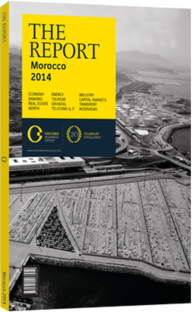Kamal Mokdad, Managing Partner, Mazars Morocco, on the evolution of the tax system

The first Moroccan national conference on the tax system held in 1999 was an opportunity to carry out a common and thorough analysis of the tax system and to establish a roadmap in order to modernise the tax system for the next decade. Many reforms were introduced by the successive finance laws from 2000 to 2013 such as the simplification, rationalisation and harmonisation of the tax system, as well as the promotion of priority sectors. These reforms include:
- A reform of registration fees in 2004;
- Initiation of a value-added tax (VAT) reform in 2005;
- Development of a tax procedures book in 2005;
- Development of a base and collection book in 2006;
- Consolidating tax laws in a single book, the General Tax Code, published in 2007;
- Enlargement of the income tax scale;
- Tax integration of acts and agreements in fees registration in 2008; and
- Publication of an overall circular note in 2011. Concerning the modernisation of the tax system, in 2009 the administration introduced online tax payment for companies whose turnover exceeds Dh100m (€8.9m). Then in 2011, online tax payment was extended to firms whose turnover exceeds Dh50m (€4.4m). The legislature also decided to introduced a gradual increase of the reduced tax rate (8.75%) for exporting firms and processing industries in some provinces at a rate of 2.5% each year between 2011 and 2015. During the past decade, many measures have also been taken to promote key strategic sectors, which include real estate, agriculture, tourism, financial services, transport, marine fisheries and the film industry. For example, for agriculture, the period for the exemption of agricultural income from corporate and income taxes was extended until December 31, 2013, while the VAT rate for tourism was reduced from 20% to 10%.
In line with the aim of supporting consumption, the main measures have been the VAT rate reform for many products, redevelopment of the income tax scale, reduction of the normal corporate tax rate from 35% to 30%, and the reduction of the income tax rate on the financial sector from 39.6% to 37%.
The social measures of the finance laws from 2000 to 2013 deal mainly with facilitating access to social housing, removing VAT for health services, exempting from all taxes and fees real estate developers who agree to build social housing within five years and increasing the rate of business expenses under revenue tax from 17% to 20%, capped at Dh28,000 (€2486) per year instead of Dh24,000 (€2131).
The finance laws have provided specific tax measures for foreign investors such as the creation of Casablanca Finance City with a reduced tax rate for companies established in the city, creation of export-processing zones with tax incentives, establishment of logistics platforms with the objective of optimising locations for production sites and encouraging international companies to relocate, and amendments to the exchange regulations law.
The current Moroccan tax system framework has modern characteristics based on pillars (corporate tax, revenue tax and VAT) widely practised in countries with liberal economies.
However, the system still has further room for improvement, particularly in regards to the distribution of the tax burden and simplification of procedures for improved tax collection. Moreover, the tax burden does not seem to be fairly supported by different economic factors, and the majority of corporate tax is paid by a small minority of companies: 2% of companies pay 80% of the tax. Another issue that should be addressed in future tax reforms is the informal sector. According to the latest World Bank “Economic Memorandum” report published on Morocco, the informal sector in the country represents 45% of non-agricultural jobs and 36% of GDP.
You have reached the limit of premium articles you can view for free.
Choose from the options below to purchase print or digital editions of our Reports. You can also purchase a website subscription giving you unlimited access to all of our Reports online for 12 months.
If you have already purchased this Report or have a website subscription, please login to continue.

